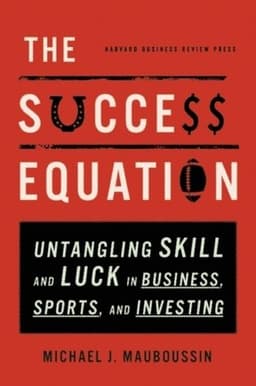
The Success Equation Book Summary
Untangling Skill and Luck in Business, Sports, and Investing
Book by Michael Mauboussin
Summary
The Success Equation is a comprehensive guide to understanding the relative roles of skill and luck in shaping outcomes, offering practical insights and tools for improving decision-making, performance, and predictions in a wide range of domains, from sports and business to education and investing.
Sign in to rate
Average Rating: 4.5
Skill And Luck: Definitions And Impact On Success
Chapter 1 opens by defining the key concepts of skill and luck. Skill is "the ability to use one's knowledge effectively and readily in execution or performance." It can be developed through deliberate practice. Luck, on the other hand, is a chance occurrence outside of one's control that can be good or bad.
Most outcomes in life are due to a combination of skill and luck. The more an activity relies on skill, the more predictable the outcomes. The more an activity is influenced by luck, the less predictable it becomes. Understanding where an activity lies on the skill-luck continuum is critical for evaluating past results and forecasting future performance.
Section: 1, Chapter: 1
Skill, Luck, and Sample Size
One of the key lessons is the relationship between skill, luck, and sample size. In short:
- The more an activity is influenced by skill, the smaller the sample size needed to detect differences in skill
- The more an activity is influenced by luck, the larger the sample size needed to detect differences in skill
For example, if you want to know who the best chess player is, you might only need to see a small number of games. But if you want to know who the best investor is, you'd need to see results over a very long period, because short-term investing outcomes are heavily influenced by luck. Always consider sample size when evaluating performance. Don't read too much into small samples, especially where luck is involved.
Section: 1, Chapter: 1
Reversion To The Mean: The Cruel Equalizer
Chapter 1 also introduces the concept of reversion to the mean - the idea that an outcome that is far from the average will be followed by an outcome that is closer to the average. Reversion to the mean occurs whenever two measures are imperfectly correlated. The lower the correlation, the more extreme the reversion. In activities with a significant element of luck, reversion to the mean can be a powerful force. A few key implications:
- Don't overreact to extreme performances, good or bad. They are likely to revert toward the average.
- Be wary of paying for past performance. The "hot hand" may be nothing more than luck.
- Anticipate reversion in your own performance. If you have a great year, don't expect to maintain that level. If you have a terrible year, better times are likely ahead.
Section: 1, Chapter: 1
The Fooled By Randomness Bias
One of the key reasons we struggle to untangle skill and luck is that we tend to underestimate the influence of randomness. This "Fooled by Randomness" bias causes us to:
- See patterns in random noise
- Confuse correlation for causation
- Create narratives to explain chance events
- Attribute success to skill and failure to bad luck
To counter this bias:
- Be skeptical of simple cause-effect stories, especially in complex systems
- Don't overfit explanations to past data - it may just be noise
- Look for base rates and assess prior probabilities before judging
- Consider alternative histories - what else could have happened?
Section: 1, Chapter: 2
Storytelling Obscures Skill And Luck
Humans are natural storytellers. We crave narratives to make sense of the world. But this desire for causal explanations often leads us astray when assessing the relative roles of skill and luck.
We tend to craft narratives that attribute success to skill and hard work, while blaming failure on bad luck or external circumstances. We are quick to impute a causal relationship between action and outcome, even when the connection is tenuous or nonexistent.
The problem is compounded by our tendency to focus on a small number of highly successful people or companies, without considering the much larger number of failures. By sampling only the winners, we overestimate the impact of skill and underestimate the role of luck.
Section: 1, Chapter: 2
Visualizing The Skill-Luck Continuum
The luck-skill continuum is a powerful conceptual model for understanding the relative contribution of luck and skill in different domains. The key features of the continuum are:
- The extreme left represents pure luck (e.g. roulette) and the extreme right represents pure skill (e.g. chess)
- Most activities fall somewhere between these extremes, combining both luck and skill
- As you move from right to left, luck plays an increasingly important role and larger sample sizes are needed to detect skill
- Reversion to the mean is stronger on the left (luck) side of the continuum
- Differences in skill are easier to observe on the right side of the continuum
The continuum is useful for setting expectations and making better decisions. If you know where an activity lies on the continuum, you can better interpret past results and anticipate future outcomes.
Section: 1, Chapter: 3
Blending Skill And Luck To Match Real-World Results
Mauboussin illustrates the skill-luck continuum using the example of the NBA draft lottery. In the lottery, the worst teams get the highest probability of winning the top draft picks, in an effort to maintain competitive balance.
Mauboussin and his colleagues simulated the draft lottery under two scenarios: one with pure luck (a weighted coin flip) and one with pure skill (the worst team always gets the #1 pick). They then compared the actual results to these two extremes.
The results showed that the real NBA draft lottery results fell almost exactly halfway between pure luck and pure skill, suggesting that the lottery system does a good job of blending luck and skill to achieve its intended purpose. This type of simulation - comparing real-world results to luck and skill extremes - can be a useful tool for placing activities on the skill-luck continuum.
Section: 1, Chapter: 3
The Paradox Of Skill: Why Bigger Advantages Lead To Smaller Edges
The paradox of skill states that as the overall skill level in a field increases, luck becomes more important in determining outcomes. Consider baseball as an example. As training techniques and technology have improved, the average skill level of MLB players has increased over time. But the dispersion of skill has decreased. The best players today aren't as far above average as the best players 100 years ago. The paradox has important implications:
- In highly skilled fields, small differences in skill can lead to big differences in outcomes, because luck plays a larger role
- Sustaining a competitive advantage becomes harder as rivals get better at copying best practices
- Past success becomes less predictive of future success
- Forecasting becomes more difficult, because luck drowns out skill
- The key lesson: don't assume that an edge will persist, especially in highly skilled, competitive domains. What worked before may not keep working.
Section: 1, Chapter: 3
Using Statistics To Place Activities On The Continuum
Chapter 3 presents a method for empirically placing activities on the skill-luck continuum, using three statistics:
- Demonstrated consistency of outcomes across repeated trials (e.g. year-to-year correlation of batting averages)
- The distribution of success among the population of participants (e.g. number of players hitting above .300)
- The ability of a measure to predict future performance (e.g. correlation of on-base percentage to future runs scored) Using these measures, we can estimate the relative contribution of skill and luck in different domains.
Section: 1, Chapter: 3
Sports on the Continuum
- Basketball statistics show high year-to-year correlations, a dispersed distribution of success, and strong predictive power - indicating a strong role for skill
- Hockey statistics show lower consistency, a more concentrated success distribution, and less predictive power - indicating a larger role for luck These statistical tools give us an objective way to assess the skill-luck balance in different domains and make better predictions.
Section: 1, Chapter: 3
Three Questions To Place Any Activity On The Luck-Skill Continuum
Chapter 4 provides a simple three-question framework for placing any activity on the luck-skill continuum:
- Can you easily assign a cause to the effect you see? If yes, the activity is closer to the skill side. If not, it's closer to the luck side.
- What's the rate of reversion to the mean? The quicker the reversion, the more luck is involved.
- How predictable are the results? The more predictable, the more skill is involved.
For example, in chess, cause and effect are clear, reversion to the mean is slow, and results are highly predictable - indicating a strong role for skill. In roulette, cause and effect are unclear, reversion to the mean is rapid, and results are unpredictable - indicating a dominant role for luck. This framework provides a quick heuristic for assessing the luck-skill balance in any domain.
Section: 1, Chapter: 4
Using Variance To Measure Skill
Another approach to quantifying skill and luck is to use statistical concepts like variance and correlation. The idea is that skill contributes to "true" differences in performance that persist over time, while luck contributes random noise that cancels out over time. By measuring the variance in performance across different time periods, we can estimate how much of the total variance is due to skill (persistent differences) vs. luck (transient noise).
For example, if we measure the year-to-year variance in batting averages for a large sample of MLB players, we can calculate that about 50% of the total variance is explained by "true" skill, while the other 50% is due to luck. Similar calculations show that skill explains about 88% of the variance in NBA winning percentages, but only 62% in NFL winning percentages.
Section: 1, Chapter: 4
When Experience And Expertise Diverge
A key insight is that experience and expertise are not the same thing. Experience is a measure of time spent in an activity. Expertise is a measure of skill level attained.
In some domains, experience and expertise go hand in hand. The more you do something, the better you get at it. This is often true for simple, stable skills like typing or bike riding. But in other domains, the two can diverge. More experience does not always translate into more expertise. This is common in complex, unpredictable domains like investing or strategic decision-making.
The key difference is feedback. In domains with clear, rapid, unambiguous feedback, experience breeds expertise. But in domains with noisy, delayed, or ambiguous feedback, experience can breed overconfidence without true expertise. The actionable insight is to be wary of equating experience with expertise, especially in uncertain domains. Look for objective measures of skill, not just years on the job.
Section: 1, Chapter: 5
This concept is also discussed in:
Range
The Power Laws Of Performance
Mauboussin examines the surprising statistical regularities that show up across many domains of human performance. The key finding is that many performance metrics follow a power law distribution, wherein:
- A small number of top performers account for a disproportionate share of the total output
- The gap between the best and the rest is much larger than a normal distribution would predict.
For Example:
- City sizes (a few mega-cities, many small towns)
- Wealth distribution (a few billionaires, many people of modest means)
- Bestseller lists (a few blockbuster hits, many low-selling titles)
- Scientific citations (a few papers with massive impact, many rarely-cited papers)
The power law pattern arises from the complex social dynamics that shape success in these domains - in particular, the rich-get-richer effects of cumulative advantage.
Section: 1, Chapter: 6
Beware The Fallacy Of The Successful
An important lesson from Chapter 6 is to beware the fallacy of learning only from successes. This is the error of sampling on the dependent variable - looking only at the winners and trying to figure out what made them win. The problem is that this approach ignores the large number of non-winners who may have done the same things as the winners.
For example, studying only successful entrepreneurs may lead you to conclude that dropping out of college is a good idea. But this ignores the vastly larger number of college dropouts who failed to build billion-dollar businesses. The key is to study both successes and failures to identify the true factors that distinguish the two.
Section: 1, Chapter: 6
The Three Measures Of A Useful Statistic
A good metric should have three key properties:
- Consistency - Does the metric reliably measure the same thing across time and contexts?
- Predictive power - Does the metric actually predict the outcome we care about?
- Noisiness - How much random variability is there in the metric relative to the signal?
The best metrics are consistent, predictive, and have a high signal-to-noise ratio. Examples of useful metrics include:
- On-base percentage in baseball (consistent, predictive of scoring, less noisy than batting average)
- Customer retention rate in business (consistent, predictive of profits, less noisy than raw sales numbers)
- Sharpe ratio in investing (consistent way to measure risk-adjusted returns, predictive of fund quality)
Section: 1, Chapter: 7
Moneyball: The Art Of Using Better Metrics
Consider the story of the Oakland A's baseball team, as chronicled in Michael Lewis's book Moneyball. For decades, baseball teams relied on traditional statistics like batting average, runs batted in, and stolen bases to evaluate players.
The A's, led by general manager Billy Beane, pioneered a new approach based on more sophisticated statistical analysis. They focused on metrics like on-base percentage and slugging percentage, which better captured a player's offensive value.
By using these better metrics, the A's were able to identify undervalued players and assemble a competitive team on a shoestring budget. Their success demonstrated the power of using the right metrics. Look for the measures that truly drive performance, even if they are unfamiliar or go against the grain.
Section: 1, Chapter: 7
Deliberate Practice And The Path To Expertise
Chapter 8 dives into the science of skill development and the role of deliberate practice in building expertise. The key takeaways are:
- Skill development follows a predictable path from the cognitive stage (intellectualizing the task) to the associative stage (refining technique) to the autonomous stage (performing automatically)
- Deliberate practice is the key to reaching the autonomous stage and achieving genuine expertise. It involves focused, repetitive practice with immediate feedback, and it's not inherently enjoyable.
- Deliberate practice works best for skills that are stable (the rules don't change) and self-contained (not dependent on others). It's ideal for building technique, but less effective for developing judgment or creativity.
- Talent matters, but deliberate practice is essential. The "10,000 hour rule" is an oversimplification - the quality and specificity of practice matters as much as the quantity.
- The key to deliberate practice is to push yourself just beyond your current ability, seek constant feedback, and embrace the discomfort. It's hard work, but it's the only path to expertise.
Section: 1, Chapter: 8
The Power Of Checklists
In complex domains where skill and luck interact, Chapter 8 recommends using checklists to enhance performance and reduce errors. The key insights are:
- Checklists are powerful tools for managing complexity and ensuring consistency. They help us apply our knowledge reliably, especially under pressure.
- Checklists come in two main forms: READ-DO (step-by-step instructions for a complex task) and DO-CONFIRM (a verification tool to ensure nothing was missed).
- Checklists are most useful for tasks that are important, prone to error, and have multiple steps that can be codified.
- The best checklists are precise, efficient, and easy to use in real working conditions.
Section: 1, Chapter: 8
Skill Versus Luck: Two Approaches To Improving Performance
Consider two different approaches to improving performance, depending on where the activity falls on the luck-skill continuum:
- For activities near the skill side of the continuum, focus on deliberate practice. The key is to break down the task, get repetitions with immediate feedback, and continually push beyond your current abilities.
- For activities near the luck side of the continuum, focus on a well-designed process. The key is to think probabilistically, have a sound decision-making process, and stick to it even when faced with adverse outcomes. In the middle of the continuum, use a blend of both approaches.
Mental models and decision frameworks can improve pattern recognition and probabilistic thinking The key is to match your improvement strategy to the nature of the task and the role of luck versus skill in determining outcomes.
Section: 1, Chapter: 8
Colonel Blotto's Lessons For Underdogs And Favorites
Mauboussin introduces the Colonel Blotto game as a model for understanding how underdogs can compete against favorites. The key lessons are:
- If you're the favorite: (i.e. you have more total resources), concentrate your resources on a few key battlefields. The goal is to create overwhelming local superiority.
- If you're the underdog: spread your resources thinly across many battlefields. The goal is to win at least some battles through local superiority.
- Favorites should simplify the game to leverage their absolute advantage, while underdogs should complicate the game to exploit their local advantage. This model applies beyond military strategy - it's relevant in business, politics, sports, and any domain where competitors allocate resources.
Section: 1, Chapter: 9
The Paradox Of Skill Revisited
Chapter 10 revisits the paradox of skill and its implications for performance in various domains. The key points are:
- In many competitive domains, absolute skill levels have risen over time, but relative skill differences have shrunk. The best performers are not as far ahead of the pack as they once were.
- As a result, luck plays a larger role in determining outcomes than it did in the past. The paradox of skill states that luck becomes more important as skill improves.
- The paradox of skill helps explain phenomena like the decline of dynasties in sports, the increasing unpredictability of the stock market, and the high turnover rate of market leaders in business.
- To succeed in a high-skill world, you need to focus relentlessly on the factors you can control, have a resilient process that can withstand short-term luck, and set realistic expectations about sustainable advantages.
Section: 1, Chapter: 10
How To Think About Reversion To The Mean
Mauboussin offers practical advice on how to use the concept of reversion to the mean to make better predictions and decisions:
- Reversion to the mean is a statistical reality in any system where two measures are imperfectly correlated. Extreme outcomes tend to be followed by more average outcomes.
- The key to using reversion to the mean is to know where the mean is. In other words, you need a sense of the underlying base rate or long-term average. Err on the side of the mean.
- The more extreme the initial outcome and the further it is from the mean, the more you should expect it to revert.
Section: 1, Chapter: 10
The Outside View And The Wisdom Of Crowds
The author makes the case for the "outside view" - using reference class forecasting and the wisdom of crowds to make better predictions:
- The planning fallacy: people tend to underestimate how long a project will take, going off their inside view. The outside view looks at similar projects to get a more realistic baseline.
- The optimism bias: people tend to overestimate their chances of success. The outside view looks at base rates to temper excessive optimism.
- Crowdsourcing: the average of many independent guesses is often more accurate than any individual expert's judgement. Tapping into the wisdom of crowds is a form of taking the outside view.
- Prediction markets: by aggregating many people's bets, prediction markets harness crowd wisdom to forecast everything from elections to sales figures. They beat expert forecasts across many domains.
Section: 1, Chapter: 11
Related Content
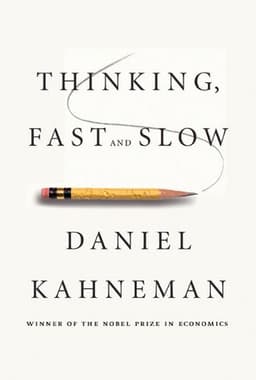
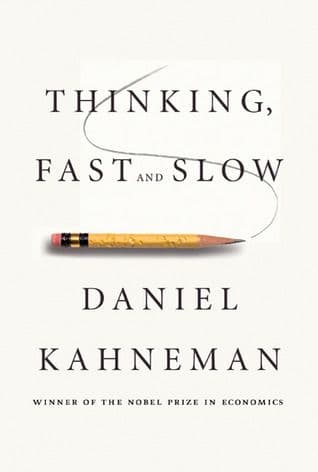
Thinking Fast and Slow Book Summary
Daniel Kahneman
Kahneman explores the two systems that drive the way we think: the intuitive, automatic System 1 and the deliberate, analytical System 2. It explores how these systems shape our judgments, decisions, and biases, revealing the surprising power of intuition and the pitfalls of overconfidence.
Kahneman explores the two systems that drive the way we think: the intuitive, automatic System 1 and the deliberate, analytical System 2. It explores how these systems shape our judgments, decisions, and biases, revealing the surprising power of intuition and the pitfalls of overconfidence.
Psychology
Personal Development
Business
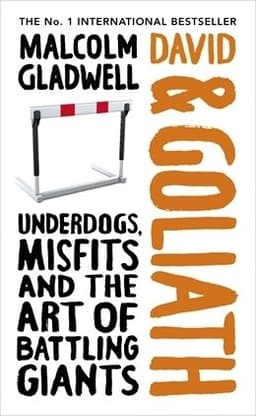
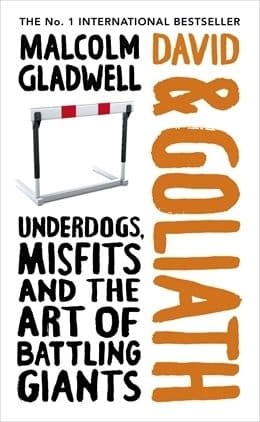
David and Goliath Book Summary
Malcolm Gladwell
In David and Goliath, Malcolm Gladwell challenges our assumptions about power, advantage, and success, showing how underdogs can triumph by turning their weaknesses into strengths and exploiting the hidden vulnerabilities of the powerful.
In David and Goliath, Malcolm Gladwell challenges our assumptions about power, advantage, and success, showing how underdogs can triumph by turning their weaknesses into strengths and exploiting the hidden vulnerabilities of the powerful.
Psychology
Business
Sociology

